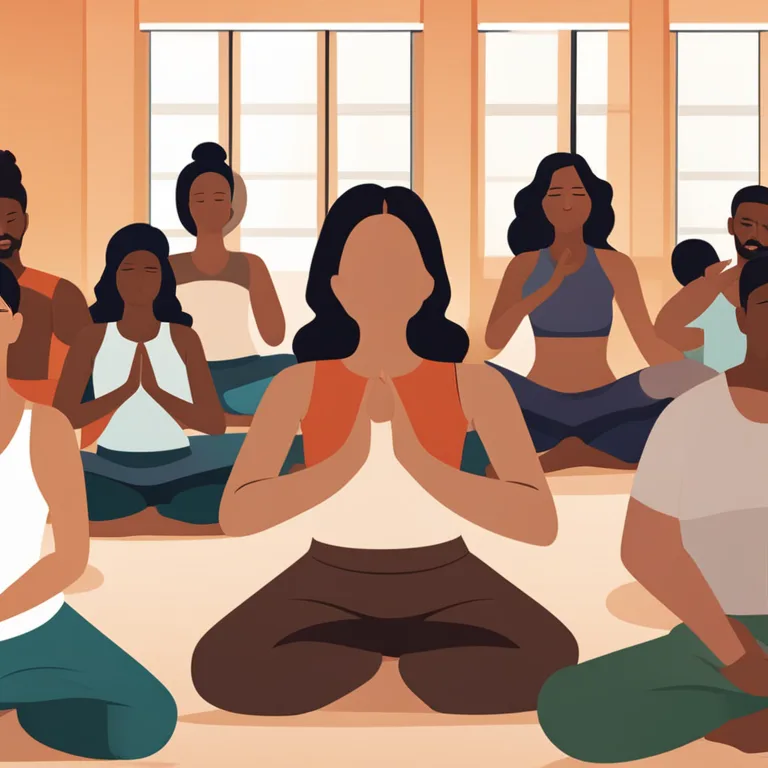
Harmonizing Spirits: Group Meditation Techniques
Discover the art of collective tranquility and strengthen the communal bond with these effective group meditation techniques. Perfect for enhancing harmony and understanding within any gathering.
article by Hina Kurosawa
Introduction to Group Meditation
Group meditation is a powerful practice that not only allows individuals to experience deep relaxation and inner peace but also fosters a sense of unity and connectedness among participants. Unlike solitary meditation, group meditation magnifies collective energy, creating a shared vibrational space that can lead to more profound experiences for everyone involved. As we move into 2024, group meditation continues to gain popularity, providing a peaceful counterbalance to our fast-paced and often fragmented digital lives.

The Circle of Silence Technique
One timeless technique is the Circle of Silence, which suits any group size. Participants sit in a circle, grounding themselves and focusing on their breath. The physical formation of a circle encourages a sense of equality and interconnectedness. Silence is maintained throughout the session, allowing individuals to delve deeply into their consciousness while aware of the collective support around them. The Circle of Silence is powerful in its simplicity, emphasizing the strength found in communal stillness.

Synchronized Breathwork
Synchronized Breathwork is a group meditation that involves harmonizing breathing patterns among participants. It's a tangible way of connecting the group as they breathe in unison, promoting a collective rhythm. This technique can start with everyone lying down or sitting up straight, focusing on inhaling and exhaling together. This synchronization of breath can create a resonance effect, enhancing feelings of empathy and togetherness, which are more crucial than ever in these years of global digitalization and personal isolation.

Guided Visualization Journeys
Guided Visualization employs vivid storytelling to lead the group on a mental journey. A facilitator describes serene landscapes or visual metaphors that encourage peace and relaxation. Participants, with their eyes closed, follow along with their imaginations. This technique is particularly beneficial for those who find silent meditation challenging, providing a narrative that can help guide wandering thoughts and maintain focus on the present moment. The shared visualizations also create common ground for discussions and reflections post-meditation.

Mantra Chanting and Sound Healing
Incorporating sound into group meditation has roots that stretch back centuries, yet it remains relevant in the modern era. Mantra Chanting involves the repetition of sacred phrases or sounds which can invoke a meditative state through vibrational frequencies. Sound Healing may use instruments like singing bowls, gongs, or tuning forks. The collective resonance of voices and instruments in a room can have a profound effect on the group's energy levels, fostering a profound sense of connection and spiritual awakening.
Movement-Based Group Meditations
Movement-Based Meditations like yoga or tai chi integrate gentle movements with meditative focus, which can be particularly beneficial in a group setting. These practices encourage mindfulness and the flow of chi or prana throughout the body. They can be especially accessible and enticing for those who may feel restless during stationary meditation. Accordingly, in an era where physical connection is often limited to screens, these techniques allow participants to reconnect with their bodies and the physical space they share with others.
Published: 1/8/2024
Modified: 1/8/2024
More predictions
Come back here soon to learn more about yourself and your future


Meditation Techniques: A Handbook
Discover the breadth of meditation methods to enhance your wellness journey.


Meditation: Finger Techniques Explored
Discover the art of finger meditation to harmonize body, mind, and spirit through ancient practices for modern wellness.


Diverse Meditation Techniques
Explore various meditation methods to enhance your mental clarity, emotional balance, and spiritual insight.